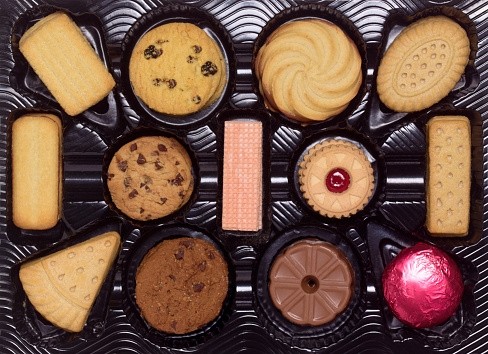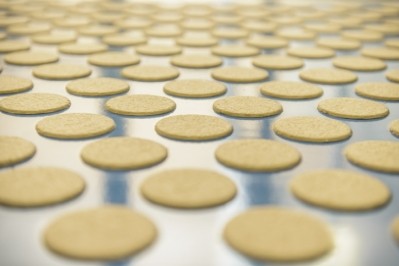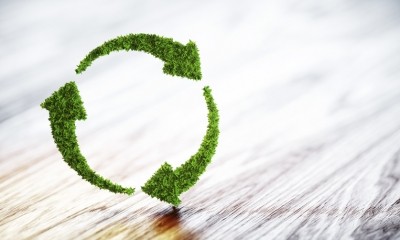Spotlight on former foodstuffs sector: Concern over packaging residues in feed

A UK farmer contacted the paper after he found plastic shreds in his animal feed. He told the Guardian that his feed supplier had informed him the packaging traces in the feed are legal, a part of the recycling process that turns former foodstuffs into animal feed.
The former foodstuffs processing industry in the UK looks to avert sending to landfill more than 650,000 tons of unused food, from bread to biscuits products to breakfast cereals, each year by transforming that tonnage into animal feed.
As well as pre-consumer foodstuffs, the sector sources products that had been made retail ready from factories, but were deemed off spec, or packaged goods from retailers and distribution networks that no longer complied with shelf life requirements or were in in seasonal wrapping. Feed processors routinely remove the packaging from surplus food mechanically. While this removes most of the packaging, small amounts can remain in the feed material.
The Guardian noted that the official EU level for plastic permitted in animal feed is zero, but, it said, in reality, many other countries operate within a 0.15% limit – including the UK.
Weighing in on the comments in the newspaper article, Paul Featherstone, chair of the UK Former Foodstuffs Processors Association (UKFFPA) and director of former foodstuffs into feed producer, SugaRich, told FeedNavigator:
“It is important to note, as Guardian writer, Harriet Grant, did, that, at present, the legal tolerance for packaging in EU legislation is zero. However, this ‘zero tolerance’ was not developed with mechanical former foodstuff processing in mind. As a result, many Member States competent authorities took a very sensible and pragmatic approach and set local maximum-permitted levels (MPLs) in the region of 0.15% just as the Food Standards Agency (FSA) did here in the UK.
“Operators are then checked against this on a regular basis to ensure that this safe level is not exceeded and are compliant with good manufacturing practices.”
He said the reason authorities did this was driven by their desire to prevent huge quantities of safe food going to landfill, with increasing pressure to implement circular economy strategies across Europe.
“Keeping valuable nutrients in the food-feed chain is 100% the right thing to do.The FAO/UN have confirmed that, under the Sustainability Development Goal 12.3, the re-use of food nutrients into feed is a means to reduce food waste.
"Processed former foodstuffs are of great value in animal nutrition and allow for a reduced need for cereal grains, which require land.
"My personal view is that it would be significantly more detrimental to the environment to discard 650,000 tons of surplus food in its packaging to UK landfill.”
Risk from microplastics in feed
However, an expert told the Guardian the plastic shreds could pose a risk to human health and urgently need to be the subject of more research.
Dr Heather Leslie, an ecotoxicologist specializing in microplastics at the Vrije University in Amsterdam, said that tiny microplastics could be released from larger pieces during feed processing and the smaller fractions could be even more risky for the animal’s health.
“We’ve known for decades that after ingestion fine plastic particles cross the mammalian gut barrier and enter the bloodstream. It has already been tested in pigs, dogs, rats and in chickens. From the bloodstream, they can be transported to tissues and organs. We know this from studies with rats.”
Though, another expert, Stephanie Wright, a research associate at King’s College London studying the impact on human health of microplastics, noted, in the same article, that the chemical burden on humans and animals from the general environment is so great that it is difficult to know whether plastic in feed plays any role, a view that the UKFFPA chair agreed with.
Avoiding fraudulent practice
While the EU has set permitted maximum levels for some undesirable substances such as arsenic, lead and dioxins, Featherstone said that there has never been a logical or similar MPL for adventitious packaging.
“The reason packaging materials are on the EU list of prohibited materials in feed is to avoid the fraudulent replacement of genuine feed materials with packaging materials."
The EU Former Foodstuffs Processors Association (EFFPA) estimates that around 3.5m tons of former foodstuffs annually are processed into animal feed in the EU and that could jump to 6.5 or 7m tons by 2025.
Former foodstuffs used in feed in Europe are of plant origin. Their benefits in feed derived from their high-energy content in the form of sugars, oils and starch. The EU piglet market is said to be a significant user of such feed - the sweet taste helps with weaning – and the cattle sector also benefits.
The industry was valued at around €1bn in 2014.
Sorting technology
EFFPA told this publication in April 2017 that control of packaging residues was firmly on the EU former foodstuffs sector's radar, and that it was evaluating optical sorting technology that could show up bright colors and the reflective properties of metalite packaging to screen for any packaging residues, a bit like the technology used to check for discoloration of product in a chip or crisp factory.
Today, Featherstone debriefed us on where the sector is on using that kind of technology:
"We have had some ‘knock-backs’ recently with the UK and French optical sorting kit manufacturers. We, and the manufacturers, have realized that sorting ‘green’ crisps from normal crisps is very different from taking very small pieces of food grade packaging from our finished products. Our finished feed particle size of 0.5-4mm has presented more of a challenge to the equipment manufacturers than we had imagined. Some have ‘thrown the towel in’ while others are still working on the challenge in-hand.
"Our latest step has been [to engage with] a Chinese company that is producing equipment for the rice and quinoa sector and, hence, capable of working to a much smaller particle size differentiation. Unfortunately, the work is still ongoing but, at £500K per installation, we want it to be right so that we [achieve that] significant step forward in [being able to] remove that tiny little bit of packaging that is left in our feeds."















